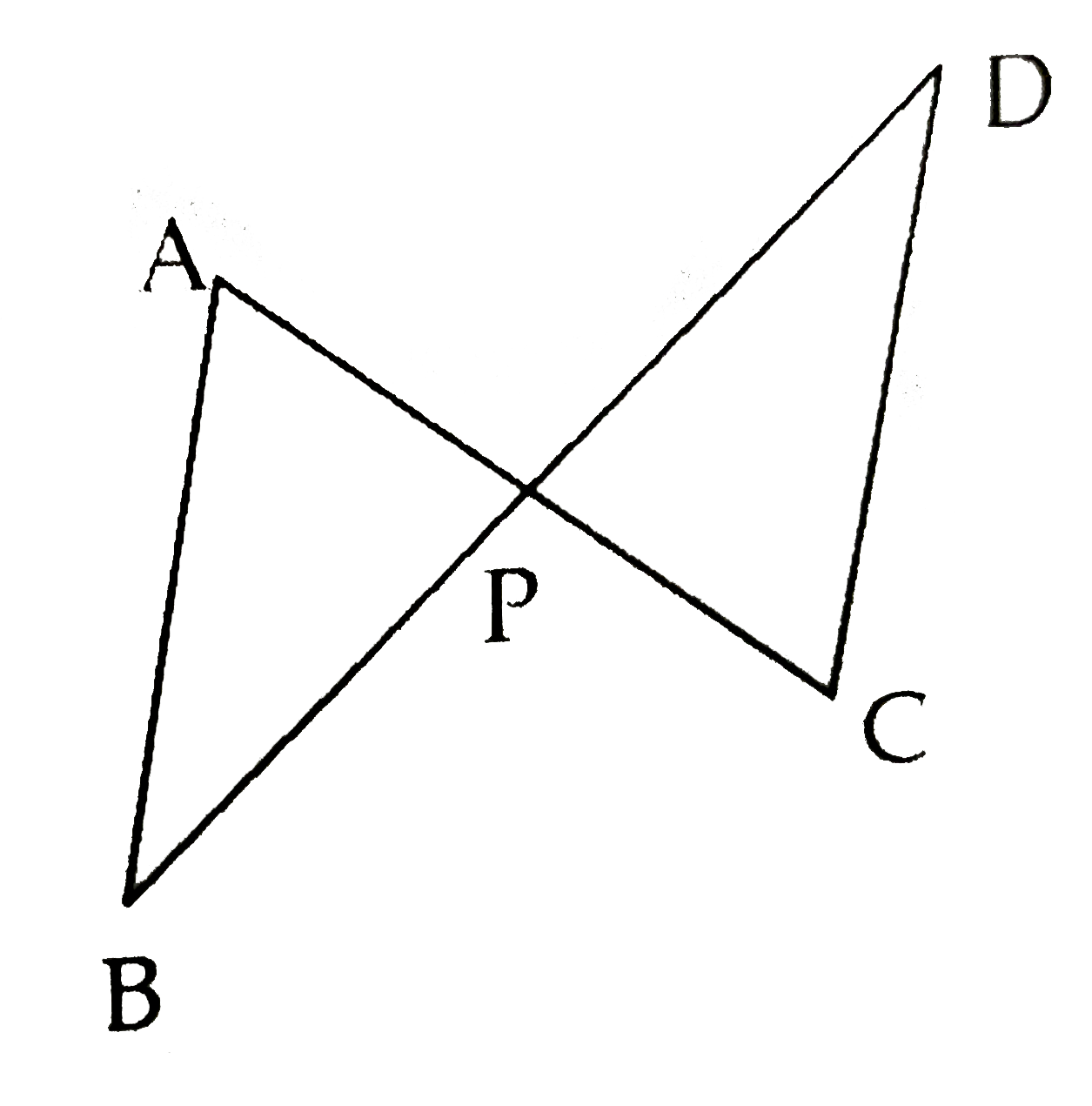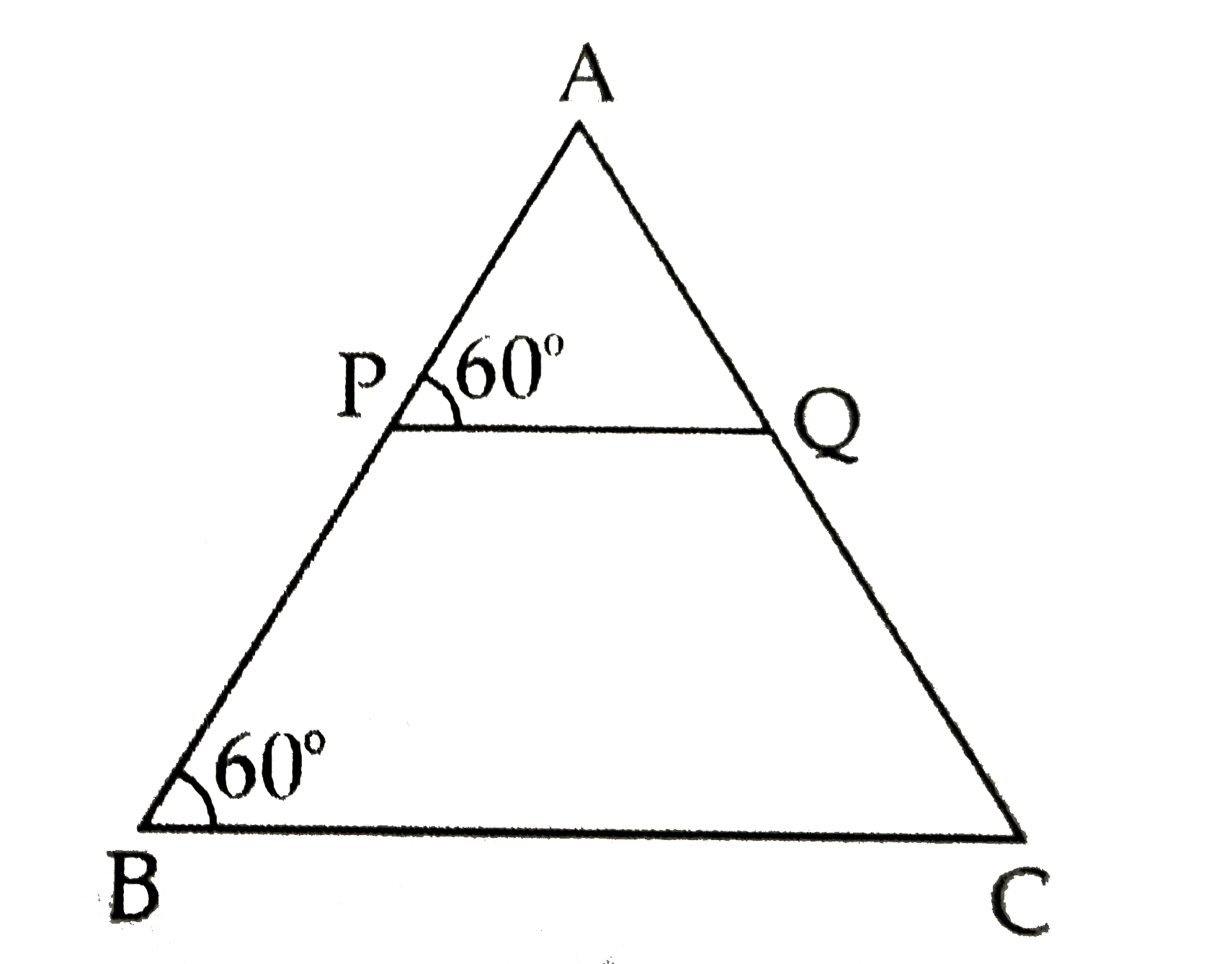In the figure seg AC and seg BD intersects each other at point P and APCP=BPDP . Then Prove that ΔABP~ΔCDP.
 Solution in Tamil
Solution in Tamil
Step by step video & image solution for In the figure seg AC and seg BD intersects each other at point P and (AP)/(CP)=(BP)/(DP) . Then Prove that DeltaABP~DeltaCDP. by Maths experts to help you in doubts & scoring excellent marks in Class 10 exams.
Topper's Solved these Questions
- BOOK - CHETAN PUBLICATIONCHAPTER - SIMILARITY EXERCISE - Practice Set - 1.47videos
SIMILARITY
- BOOK - CHETAN PUBLICATIONCHAPTER - SIMILARITY EXERCISE - Problem Set - 112videos
SIMILARITY
- BOOK - CHETAN PUBLICATIONCHAPTER - SIMILARITY EXERCISE - Practice Set - 1.213videos
SIMILARITY
- BOOK - CHETAN PUBLICATIONCHAPTER - QUADRATIC EQUATIONSEXERCISE - ASSIGNMENT12videos
QUADRATIC EQUATIONS
- BOOK - CHETAN PUBLICATIONCHAPTER - STANDARD IX SYLLABUS EXERCISE - PROBLEMS FOR PRACTICE20videos
STANDARD IX SYLLABUS
Similar Questions
If ΔABC~ΔPQRandAB:AP=2:3 , then fill in the blanks.
A(△ABC)A(△PQR)=(AB)2(PQ)2=2232=□□01:37View SolutionIn ΔABC,B−D−CandBD=7,BC=20 Then find the following ratio.
A(ΔABD)A(ΔADC)
 02:11View Solution
02:11View SolutionMeasurements of the some angles in the figure are given . Prove that APPB=AQQC
 01:31View Solution
01:31View SolutionIf α and β are the roots of quadratic equation 2x2+4x+3=0, then the value of α+β=
02:45View SolutionDraw segment PQ=4.3cm and bisect it.
02:17View SolutionHow many lines of symmetry does the above figure have ?
05:41View SolutionDetermine the point of symmetry of a regular hexagon.
02:10View SolutionDtermine the images of the following figure about the given line :
02:17View SolutionMatch the following Column A to Column B
 02:10View Solution
02:10View SolutionMatch the following Column A to Column B
 04:23View Solution
04:23View SolutionMatch the following Column A to Column B
 01:13View Solution
01:13View SolutionThe inequation represented by the graph given below is :
01:49View SolutionThe inequation that best describes the graph given below is _________
02:11View SolutionThe inequation that best describes the following graph is _________
01:15View SolutionWhich inequations represent the shaded region in the given figure
01:56View Solution

